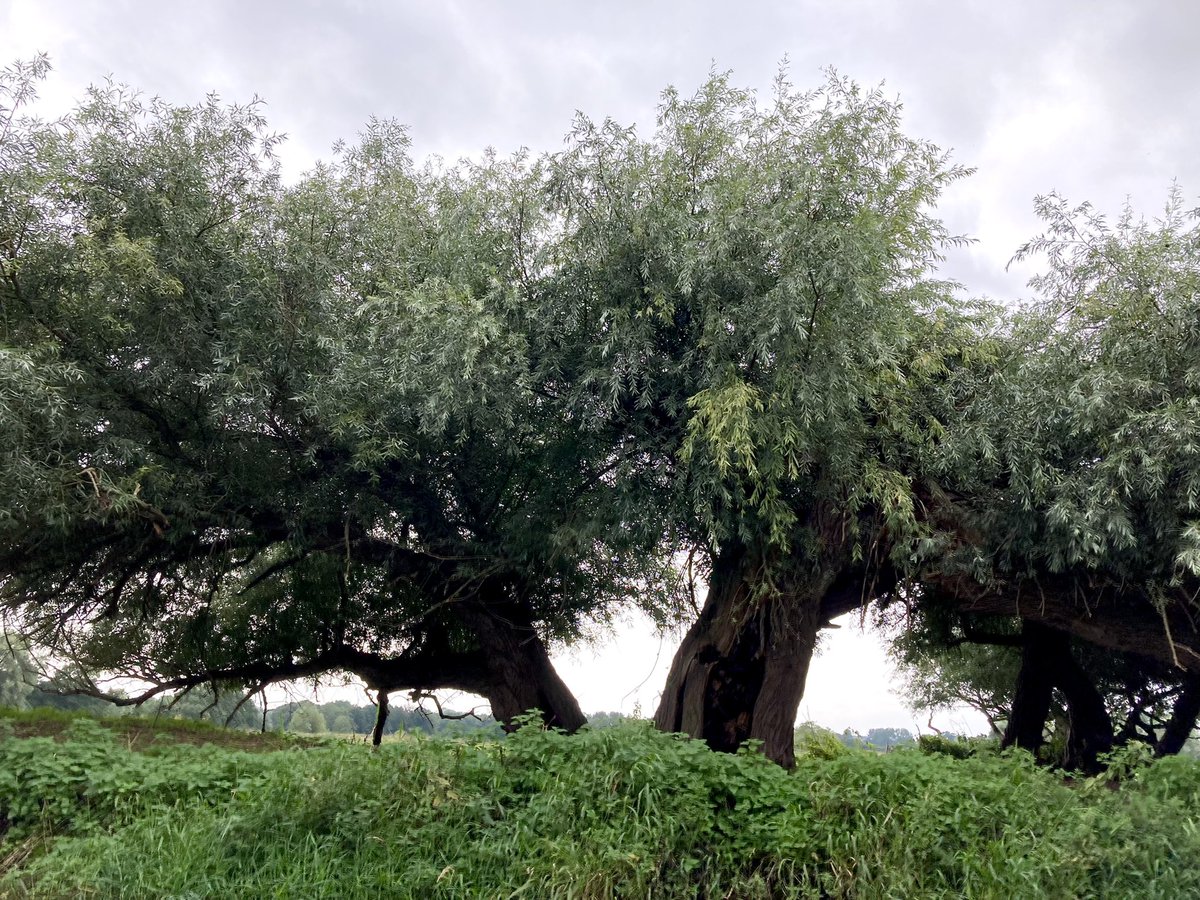THREAD. Here’s a story that always thrills me - the clues in some field- & #placenames to early #medieval daily lives, landscapes & society in the period between c400-700AD, using an example from Cambridgeshire in a landscape that wouldn’t usually get a 1st let alone a 2nd glance 

2. I was most interested in woods & pasture, & in David Hall’s suggestion that some field-names preserve how people saw the landscape in the centuries c400-1100. So I found as many names as I could across 10 Cambs parishes & mapped them.... 

3. There were several variations on the same that that were specially intriguing: Offal or Orfill or Offil. And they lay in 3 neighbouring parishes - Eversden, Harlton, & Haslingfield. What did it mean? 

4. Luckily @The_EPNS nottingham.ac.uk/research/group… has published a book on place-names in Cambs. that includes some field-names. Offal, in turns out, is made up of ‘ald’ (old) + ‘feld’ (open country).. 



5. So, what did ‘feld’ look like? The word has a similar meaning to S African ‘veld’ - uncultivated, open grassland, studded with trees & low scrub. 

6. Perhaps something like that in parts of Hatfield Forest in Essex, whose name includes the same element - though there will be variations depending on height above sea-level, drainage, soil & geology? (Photo via markseton.co.uk/2017/05/01/243…, and see kepn.nottingham.ac.uk) 



7. So, how to explain the location of these Cambs. Offals? The geological map showed that they lay on heavy gault clay on the flat valley floor of the Bourn Brook, a tributary of the R Cam. The gault is saturated clay, so wet that a hole just a few inches deep will fill w/ water 



8. In parentheses, there’s more detail, on the reconstruction of the original extent of the Offals at academia.edu/2613989/Mediev…, & more on using field-names at academia.edu/1561593/Field-….
9. It seemed likely that most of the area of the gault clay was ‘feld’ c400-700, especially as most was first ploughed after modern drainage - except for some limited desperate 12/13thC attempts, soon abandoned after the Black Death, that remain pasture today. 



10. The identification of the ‘feld’ was specially interesting given the place-name of one of those villages: Haslingfield, whose name records not only a ‘feld’ but alsoan otherwise unknown polity - the Hæslingas, one of many in the 5-7thC, each controlling a smallish territory. 

11. That is, the ‘feld’, the open grazing on the gault clay on the valley floor, was important enough in the lives and economy of early medieval farmers in the area to be a resource exploited by the whole territory. 



12. It’s the ‘-ingas’ element in the place-name that tells us that this was a political group controlling a territory. If you’d like to know more about it, @SurreyMedieval’s blogpost surreymedieval.wordpress.com/links/linkinga… has links to the scholarship (Gelling is now thurrock-history.org.uk/gelling1.htm)
13. It just so exciting to see a lost landscape - &, for an instant, it’s importance in the daily lives of farmers whose income depended at least in part on the stock that grazed it & who therefore made it a focus of their territory - revealed in clues available to us all. END 

Updated links to downloadable publications for more information are …ofsusanoosthuizen.files.wordpress.com/2020/06/oosthu… on the Offals, and …ofsusanoosthuizen.files.wordpress.com/2020/06/oosthu… on field-names.
• • •
Missing some Tweet in this thread? You can try to
force a refresh














